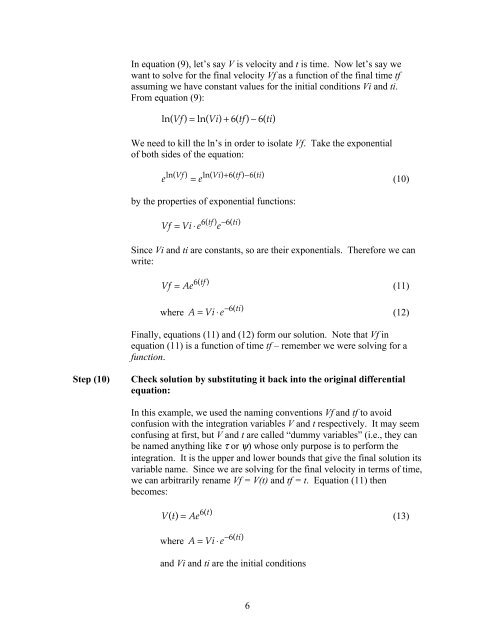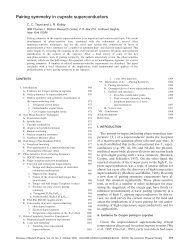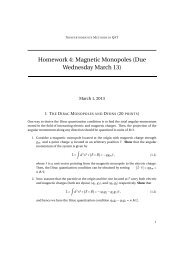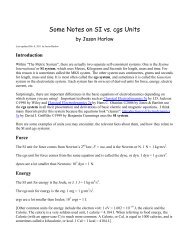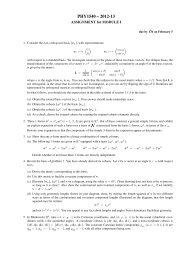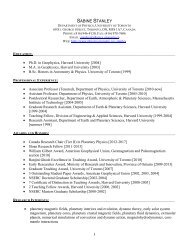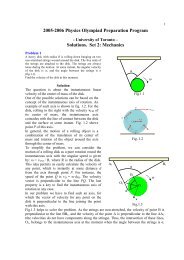A Guide to Solving Simple Ordinary Differential Equations (ODE's)
A Guide to Solving Simple Ordinary Differential Equations (ODE's)
A Guide to Solving Simple Ordinary Differential Equations (ODE's)
You also want an ePaper? Increase the reach of your titles
YUMPU automatically turns print PDFs into web optimized ePapers that Google loves.
In equation (9), let’s say V is velocity and t is time. Now let’s say we<br />
want <strong>to</strong> solve for the final velocity Vf as a function of the final time tf<br />
assuming we have constant values for the initial conditions Vi and ti.<br />
From equation (9):<br />
ln( Vf) = ln( Vi) + 6( tf) −6(<br />
ti)<br />
We need <strong>to</strong> kill the ln’s in order <strong>to</strong> isolate Vf. Take the exponential<br />
of both sides of the equation:<br />
ln( Vf ) ln( Vi) + 6( tf ) −6(<br />
ti)<br />
e = e<br />
by the properties of exponential functions:<br />
6( tf ) −6(<br />
ti)<br />
Vf = Vi ⋅e<br />
e<br />
6<br />
(10)<br />
Since Vi and ti are constants, so are their exponentials. Therefore we can<br />
write:<br />
6( tf )<br />
Vf = Ae<br />
where<br />
A= Vi⋅e −6( ti)<br />
(11)<br />
(12)<br />
Finally, equations (11) and (12) form our solution. Note that Vf in<br />
equation (11) is a function of time tf – remember we were solving for a<br />
function.<br />
Step (10) Check solution by substituting it back in<strong>to</strong> the original differential<br />
equation:<br />
In this example, we used the naming conventions Vf and tf <strong>to</strong> avoid<br />
confusion with the integration variables V and t respectively. It may seem<br />
confusing at first, but V and t are called “dummy variables” (i.e., they can<br />
be named anything like τ or ψ) whose only purpose is <strong>to</strong> perform the<br />
integration. It is the upper and lower bounds that give the final solution its<br />
variable name. Since we are solving for the final velocity in terms of time,<br />
we can arbitrarily rename Vf = V(t) and tf = t. Equation (11) then<br />
becomes:<br />
6()<br />
t<br />
Vt () = Ae<br />
where<br />
A= Vi⋅e −6( ti)<br />
and Vi and ti are the initial conditions<br />
(13)


